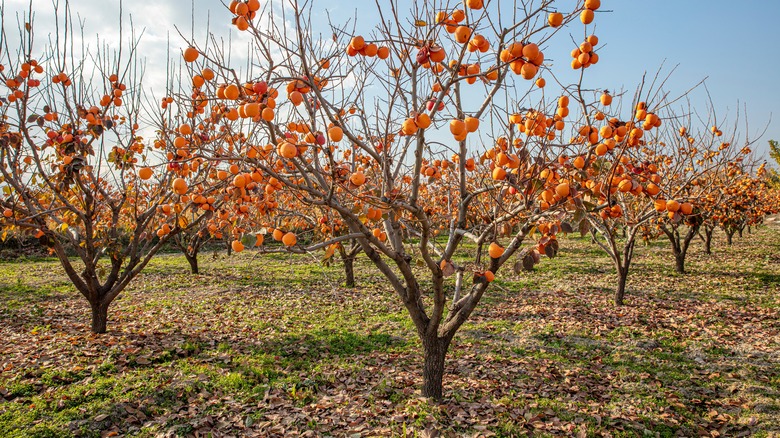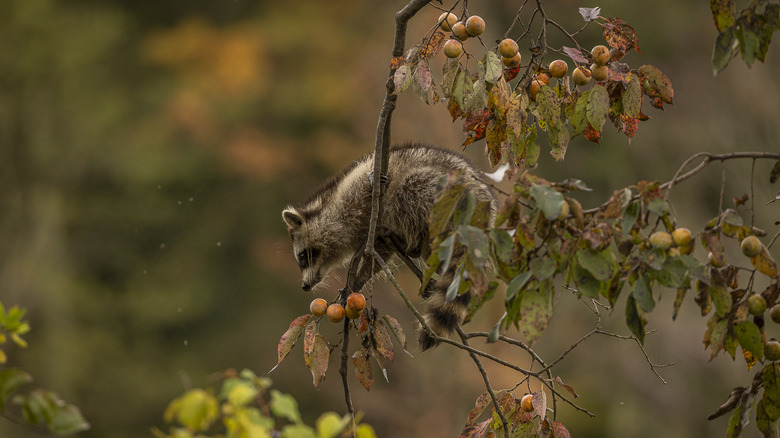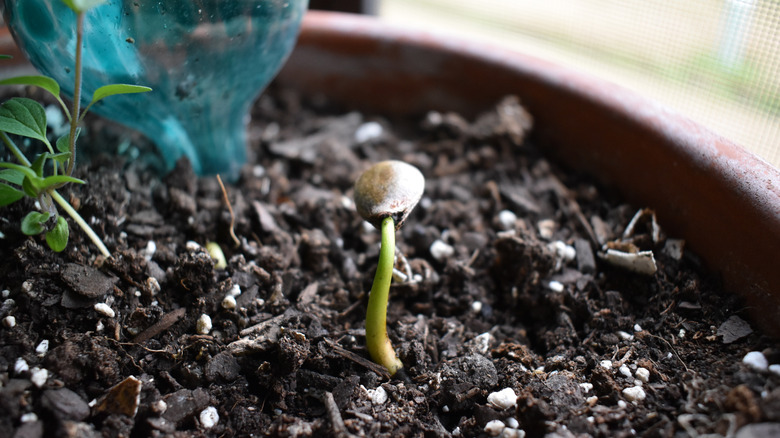The Best Time Of Year To Plant Persimmon Tree Seeds
We may receive a commission on purchases made from links.
Cut open a persimmon seed, and you can predict winter weather. If the embryo inside is spoon-shaped, expect deep snow. A knife means windy days, and a fork mild temperatures. Does this folk tale have any relationship to the distinctive orange-brown fruit tree's seed-planting schedule? Yes, it does ... in a roundabout way. Permission seeds should be planted anywhere from late spring and fall to early winter since they need a period of stratification — or, in simple terms, a cold snap — before they'll germinate. Gardeners looking to grow the tree from seed will want to see spoons in any persimmon seeds they slice in half; a spoon means a winter full of heavy snow, so you'll have the chill needed for successful seed sprouting.
The species of persimmon most often cultivated in the U.S. is the Asian persimmon (Diospyros kaki), also known as Oriental, Chinese, Japanese, or kaki persimmon. Depending on the variety, they grow anywhere from 10 to 30 feet tall. The American persimmon (Diospyros virginiana) — also called common, Florida, or Eastern persimmon, simmon, possumwood, Jove's fruit, date, or winter plum — grows natively in the Southeastern states, as far north as Connecticut and as far south as southern Florida. Compared to its international counterpart, the intensely sweet, fully ripe fruit is small, measuring just a few inches in diameter. The tree reaches heights of 30 to 40 feet, and, once established, is almost guaranteed to bring a bountiful harvest to your yard.
Wild fruit
Looking at how propagation has evolved in wild persimmon trees can give us some clues for seed planting times. Persimmon seeds are red-brown, oval-shaped, and about the size of a (flat) peanut. As you'd expect, they develop in the middle of the fruit as it ripens through the fall. The tree relies on animals to spread its seeds by eating the fruit. A 2017 study published in Ecology and Evolution found that while this process wasn't necessary for germination, digested seeds sprouted faster than their undigested counterparts. From there, the seeds sit atop the soil under a layer of moist forest humus, waiting until warmer spring weather to root.
Persimmon seeds need around 100 hours of chill, called stratification, to germinate. In the wild, that's what winter provides. Combined with moisture, this helps to break down the hard outer shell of the seed. Persimmon saplings grown from seed don't always take on the attributes of the parent plant. What's more, American persimmons are dioecious, which means a plant has only male or female flowers. You need both male and female plants to produce fruit, and you won't know which you have until the tree is established. All of this makes getting the seeds to sprout in a home garden setting more complicated than other methods of propagation. However, it's worth doing — money-savings-wise — if you have plans for a large stand of persimmons or simply want the experience.
The how-to
You can get Asian persimmon seeds from almost anywhere — Seedville USA has five for $3.00, or you can get five for $2.75 at Walmart. American persimmon seeds can be a little harder to come by. Hobby Seeds has five seeds for $1.80, or, for larger quantities, Amazon has 30 seeds for $12.96. In the fall and winter, you can also harvest persimmon seeds from large, disease-free, wild-grown fruit or from animal scat (yep, we mean poo). For the former, harvest seeds from the squishiest fruit and process them quickly. Bare persimmon seeds lose viability quickly. If attempting the latter, be sure to wear disposable gloves when harvesting and handling the seeds.
Bought seeds come clean and dry; you'll just need to rehydrate them. To remove the flesh from fresh seeds, place them in a small, clean glass jar and fill it with water. Cover the jar with a piece of cling wrap and leave it in a warm spot for a few days. Rinse the seeds in freshwater; the pulp should fall off easily. Pack the seeds — bought or otherwise —in a sealed bag filled with moist sand, peat moss, vermiculite, or paper towels, and store them in your refrigerator for three months to stratify them. Check the seeds occasionally to ensure they don't dry out. Come spring, sow them in containers with at least 3 inches of potting mix. Alternatively, plant the seeds directly into the spot you want the eventual tree to grow.


